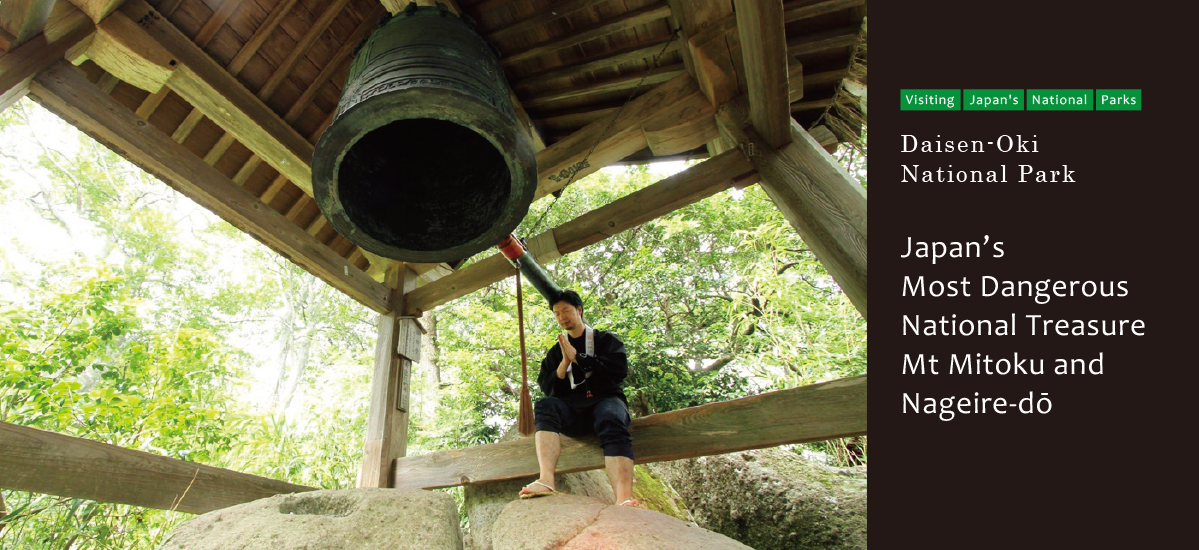

Japan’s Most Dangerous National Treasure. Mt Mitoku and Nageire-dō
Text : Sasaki Takashi / Photos : 谷口哲 Akira Taniguchi / English Version : Judy Evans
Keyword : National Parks / Visiting Japan's National Parks Series / Temples / Hiking / Mountain Climbing / Daisen-Oki National Park / Mt Mitoku / Nageire-do
A sacred mountain revered for over 1300 years
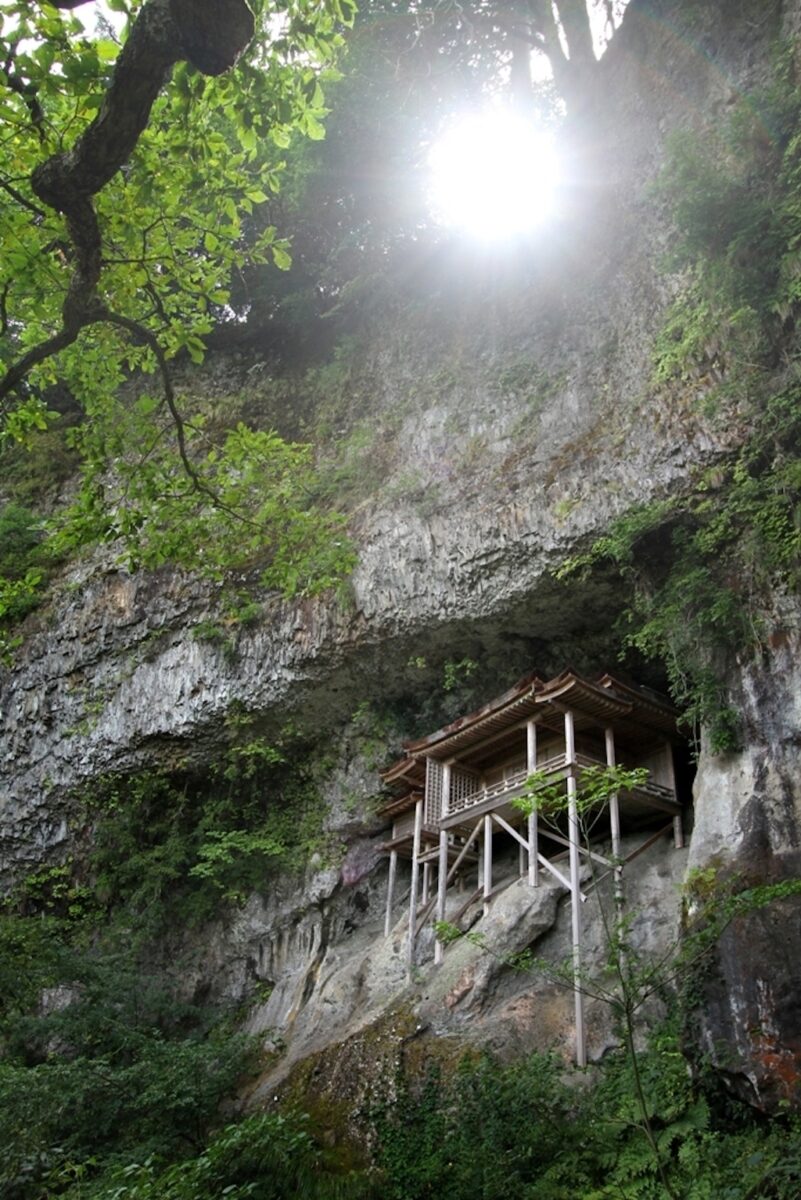
According to Sanbutsu-ji Temple’s assistant head priest, Ryōjun Yoneda, having a sense of respect for mountains is an important aspect of Sangaku Shinkō, Japan’s ascetic ‘mountain creed’. As pilgrims approach the mountain shrines on Mt Mitoku, they recite the words, ‘rokkon-shōjō’, a chant of purification to cleanse the mind and the senses.
Mt Mitoku was sanctified as a place of worship in 706 by En no Gyōja, the priest and mystic who is said to have founded the ascetic Shūgendō faith. Later, in 849, Ennin, head of the Tendai Buddhist order, founded Sanbutsu-ji Temple on Mt Mitoku, dedicating the temple to the Buddhist deities Amitabha,Mahavairocana and Sakyamuni.
Sanbutsu-ji Temple is western Japan’s leading mountain temple and has long attracted many ardent worshippers, most of whom come to see that most famous of all Sanbutsu-ji’s buildings, the Nageiredō Hall, a national treasure.

Nageire-dō clings to the side of a sheer cliff face 520 metres above sea level, appearing to float within a shallow hollow in the rock. Legend has it that the mystic priest, En no Gyōja, hurled the building up here using the power of Buddhism.
The roofline of this temple hall is constructed in the elegantly sweeping nagare-zukuri style, a classical Shintō shrine roof style, and is clad in cypress-bark shingles. Above this, the rough volcanic rock of the cliff extends out over the building to form a natural shroud that has provided centuries of protection from the harsh elements of wind, rain and snow.
“Part of the building has been dated to over a thousand years old”, says Yoneda san, confirming that Nageire-dō was built in the late Heian Period (794 – 1185). “However, who built and maintained it, and for what purpose,” he tells us, “remains a mystery.”
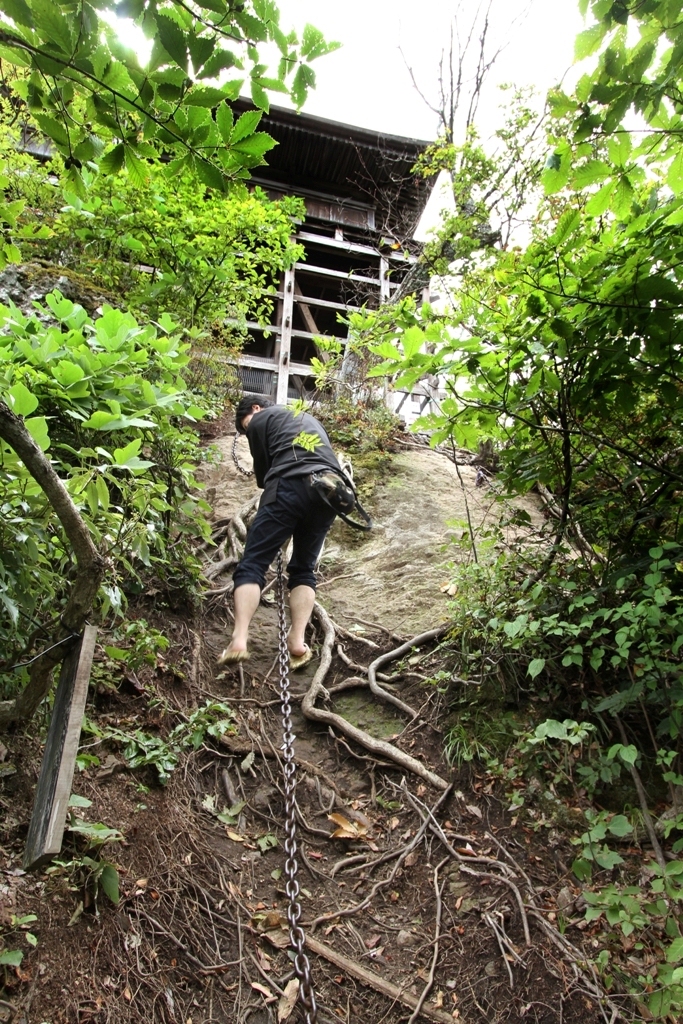
Those wishing to visit Nageire-dō must submit their request at the office, which is near the main Sanbutsu-ji Temple building. From here, the journey to Nageire-dō and back is around one and a half to two hours. The climb presents numerous challenges, such as Kazura-zaka, where climbers have to grab hold of tree roots to scramble up a steep incline, or Kusari-zaka, where climbers use chains anchored to the steep rock-face to haul themselves up.
However, just as in a tale where the hero is eventually rewarded after a series of trials and tribulations, the path to Nageire-dō is worth the effort. The steep route is dotted with moments to look forward to, such as Monju-dō Hall, built on top of a rocky outcrop. The narrow veranda running around this butai-zukuri-style temple building offers panoramic views all the way to Mt Daisen.
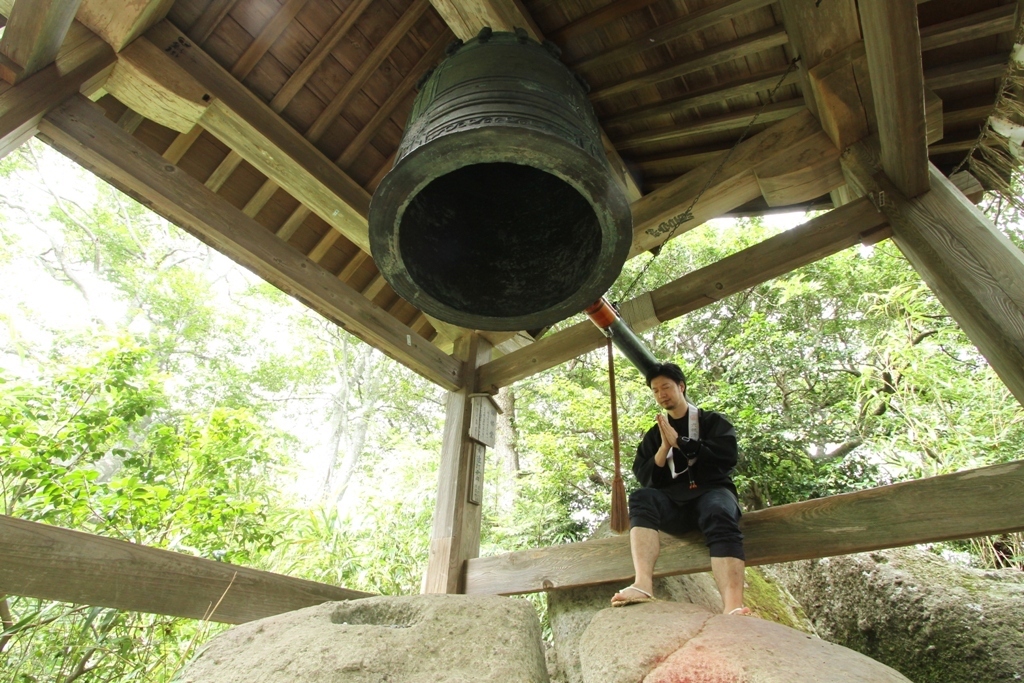
“Photographs cannot do justice to the beauty of Nageire-dō,” claims Yoneda san. He says that to experience the deep emotional impact of this mysterious hall, which sits in total harmony with the natural environment, you really have to make the climb yourself.
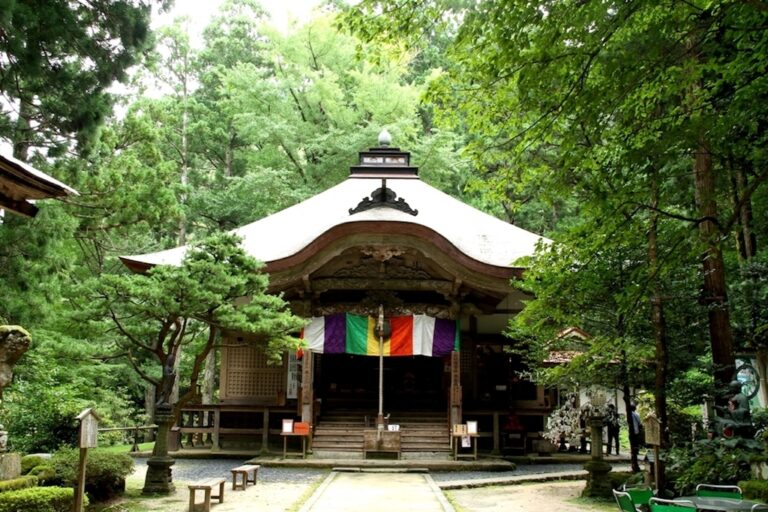
Sanbutsu-ji Temple, Mt Mitoku.
Mitoku, Misasa, Tōhaku District, Tottori Prefecture, Japan.
Phone: 0858-43-2666
Mt Mitoku is a place of ascetic religious training. Climbing the mountain involves clambering over rocks and tree roots, with some points being fairly steep. A large number of climbers have slipped and injured themselves, and anyone wishing to climb the mountain must first have their clothing and footwear checked and approved. Shoes such as sneakers will generally not be acceptable. The most suitable footwear is mountaineering shoes without metal fittings on the soles. Climbers who present without appropriate footwear may be allowed to buy a pair of waraji straw sandals in which to make the climb. Please also note that the mountain is closed through winter due to snow.








